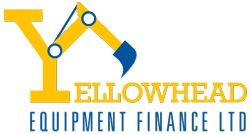
7 Cash Flow Tips For Small Businesses
January 19, 2021
2021 Edmonton Equipment Leasing and Financing for Alberta
June 22, 2021Even though leasing equipment means you don’t technically own doesn’t mean you should treat it poorly. Other than the fact that other people may be using the equipment after you, keeping it maintained will help you in various ways.
For one, maintaining a piece of equipment can put you in better standing with that leasing company. As a result the company may be willing to deal with you more in the future. That or they may even give you better deals or buying options if you show how responsible you are.
Secondly, maintaining equipment properly will also help in extending the life of machines and thus making it more profitable for you.
With these two reasons in mind, staying on top of maintenance to some extent can help immensely. Below are a few tips to keep in mind that can help you do just that.
Check Lubrication
If you are leasing machine tools and plan to use them frequently, check the lubrication levels. You want to do this at least once a week, slightly less if you are using it not as frequently.
Why bother with it? Because if all the parts are properly lubricated, you’ll have a better odds of protecting the motor of that machine. This in turn extends the expected life of that tool.
The lubrication process involves greasing of moving parts of that machine, oiling or internal moving components and even visual inspection of all the moving parts when using it. Without the proper amount of grease, lubrication, or oil and a machine will face unneeded wear and tear. This results in faster and frequent break downs and extreme damages to the tool and even profits.
Sharpen Components
Similar to lubrication, if you have any bladed tools that you are using, make sure that the blades are sharpened. Of course blades dull after a while, but every machine has a certain level of sharpness that it needs to maintain. If you don’t have it at that sharpness, you could drop production quality.
How? Well when using cutting tools the idea is to ensure the machine is cutting precise and accurate cuts that you want. A dull blade, drill, or lathe will make it harder to guarantee that your product or service is top notch and quality.
Make a point of checking the sharpness regularly. Best of all it’s easy and cheap. Take drill bits for example. There’s a simple video tutorial to help you with small drill bit sharpening. There’s likely other tutorials to help sharpening all kinds of other tools.
Check Alignments
Having secure parts aligned and sturdy is important. After all, who doesn’t like a machine breaking down due to parts installed improperly?
Unfortunately there’s only one way to test out the alignment and that’s actually using it. In this situation, give it a few test runs and measure the results. If your machine is properly aligned, the job should yield the same results. If it’s off you’ll notice it one way or another and you’ll need to realign it.
Clean Tools And Equipment Regularly
Although this one is obvious it’s still surprising how some people skip out on cleaning. Of course cleaning simple tools or heavy machinery, but even office equipment and accessories. Make a point to cleaning certain tools on a daily basis or weekly basis. This ensures that a machine or equipment stays in tip top shape.
For example, wear and tear on machines or equipment can stem from simply not keep up with cleaning. To dust on office equipment to mere build up of grim on certain parts. These can result in breakdowns, rust, or other long-term problems in certain circumstances.
Read The Manual
Manuals and handbooks are always provided whenever you get equipment. In it, it will have everything you need to know and more. Best of all, you can pass this information over to others who will be using the machinery or equipment.
Even if you are a savvy in the industry, the manufacturer knows their machines inside and out. All of their knowledge is stored in those manuals and handbooks so make a point of checking it out. Who knows, you may find some surprising aspect you didn’t know before. And maybe knowing that tricks ensures that you keep the equipment lasting for another year or two.
A manual can also ensure that you have the right tool for the job that you are looking to do.
Consider Your Workplace Environment
This goes hand in hand with cleaning and reading the manual. Inside the manual, it will outline the needs of the machine or equipment. With that in mind, you can then ask yourself:
“What sort of conditions will you be working in?”
Are you in a building? Or outside?
What sort of elements will you be dealing with?
Knowing the answer to those questions will give you an indicator of what sort of measures to take to keep your equipment safe and functional. For example, if you are in a dusty area, making a point of dusting daily will slow down wear and tear.
If you’re dealing with a lot of rain, make sure your electrical gear is kept in a dry and safe place and that no wires are exposed.
Keep A Schedule
Between cleaning, check-ups, and running a business, it can be easy for things to fall between the cracks. Especially if you have a lot of tools and equipment. With this in mind, keeping a schedule for cleaning and maintenance can keep you on top and ahead of the curve.
Record Everything
Similar to schedules, keeping some kind of log or record will help in keeping everything running smoothly. Every time the equipment is being used, make a point of getting a date, time, location, and what’s happening. Doesn’t matter if it’s maintenance, cleaning, or it’s being used for a job.
While this may sound excessive, there are perks that come with this level of diligence. Some examples are:
- Prevents unnecessary upkeep of equipment
- Builds accountability amongst the workers who use the machine or tool
- These records can reveal overall performance of the equipment
- You’ll be able to spot issues more regularly if say you had to repair parts frequently
All in all, it’s a win-win to have a log and keeping on top of it.
Stay On Top Of Training
While you won’t be needing training to use a desk or a power drill, you will need it for the larger and heavier equipment. Especially if the machinery demands several operators. Ensuring that not only is the equipment good, but those using it know what they’re doing can ensure two things:
- They know what they’re doing.
- They know how to maintain the machine properly.
This translates to less wear and tear, more profits, less break downs, and less accidents. And while you can argue that knowing the manual inside and out is all that matters, that doesn’t always guarantee it.
Yes, a manual or handbook is valuable, but people come and go in business. Certain skills get rusty and not everyone feels they need to read the manual and go through training.
By ensuring employees go through training, you are keeping their practical experience up to par. Machines change and work in new ways. As such, manuals and training programs are shifted to address those things.
Make a point of having people go through training on top of checking manuals can ensure people know what they are doing and will save headaches for the future.
Conclusion
Extending the life of equipment or tools is really what maintenance is all about. It may seem unnecessary at first, but these tips are the sort of things that happen in the background. We don’t always see them. But by doing these activities, you’ll be saving money and making more on the long-term.





